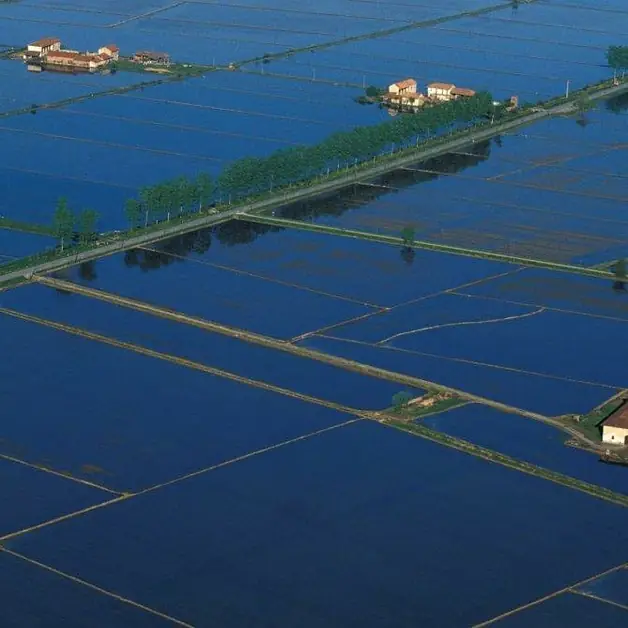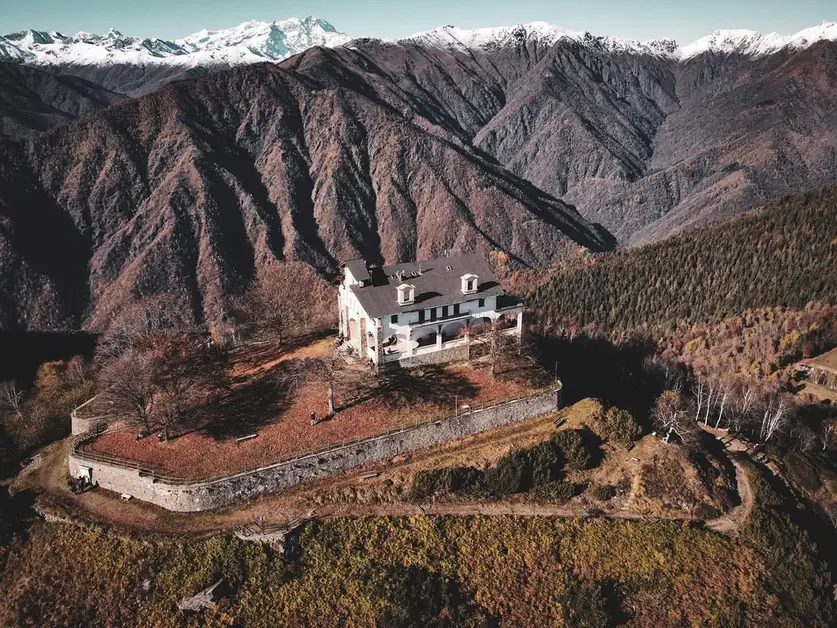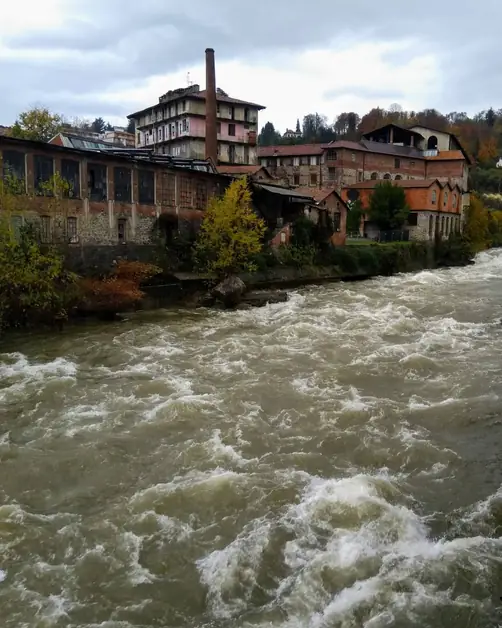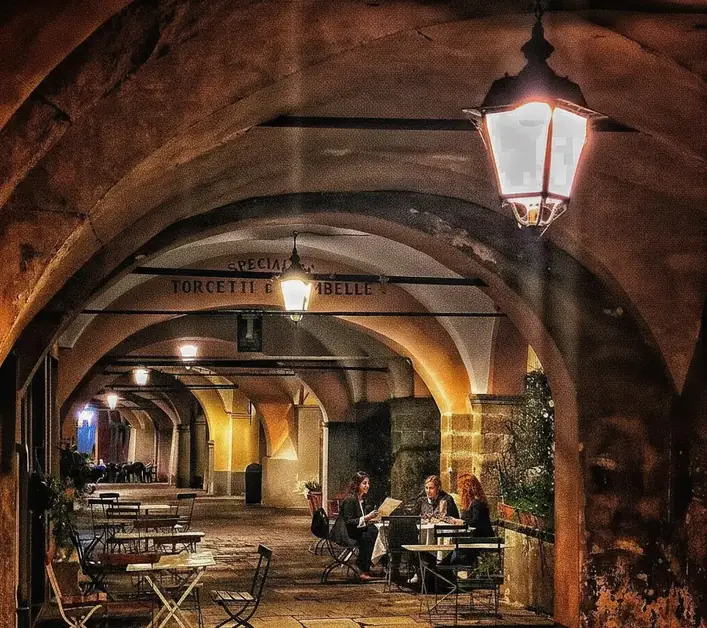The secret of water in cashmere production
Water is essential for the quality of Italian cashmere, making it unique in the world.

Why is water so important in cashmere processing?
Water is one of the most precious and invisible elements in the production process of cashmere. Just as rice in the rice paddies of Piedmont, the softest and most precious fiber in the world owes part of its quality to a special water: that which flows clear in the rivers of Biella and Vercelli. It is thanks to this water that luxury cashmere continues to be 'Made in Italy', recognized worldwide for its softness, shine, and durability.
Where does the cashmere fiber used in Italy come from?
The raw material mainly comes from Mongolia and some regions of China and Central Asia, where the Hircus goats live, from which the precious fleece is obtained. However, the real magic does not happen in the Asian pastures, but in Italy, in the skilled hands of Biella's textile masters. Here, the water from the alpine streams plays a key role in transforming this raw fiber into a unique yarn in the world.
Why is the Biella-Vercelli district so special in cashmere processing?
The textile district of Biella and Vercelli is a historical excellence of the Italian industry. For centuries, the pure waters of the Cervo and Oropa rivers have been used to wash, dye, and soften natural fibers. These waters, particularly soft and low in limestone, are perfect for not damaging the delicate cashmere fibers. The result is a soft, elastic, and silky consistency that no other area in the world has been able to replicate.
How does water affect the softness and shine of cashmere?
Water is fundamental in several stages of the process. First, it is used to wash the raw fibers, removing impurities and natural fats. Subsequently, it accompanies carding and spinning, helping to keep the fiber elastic and smooth. Finally, in the final washes, the water from the Biella Alps gives the fabric its typical softness and that delicate shine that makes a high-quality cashmere garment immediately recognizable.
Is it true that the quality of Italian water is unmatched in the world?
Yes, it is one of the most fascinating and least known truths of Made in Italy. In many cashmere-producing countries, attempts have been made to replicate Italian processing using similar machinery and techniques, but the result has never been the same. The difference lies in the chemical composition of the water. The waters of Biella are naturally pure and light, free from substances that harden the fibers. This peculiarity gives Italian cashmere a silky touch and incomparable brightness.
How is the quality of the water used by cashmere factories controlled?
Companies in the Biella and Vercelli district are subjected to very strict controls. The water used in production processes is treated, filtered, and purified before being reintroduced into the watercourses. Italian and European environmental regulations impose very strict limits to ensure that rivers remain clean and that biodiversity is not compromised. Thanks to this attention, the rivers downstream of the factories have remained clear and vital, a concrete sign of balance between industry and nature.
What are the main rivers that nourish the Biella cashmere tradition?
Among the protagonists of this story are the Cervo stream, the Oropa stream, and the minor watercourses that descend from the Biella Prealps. These waters, which originate from the snow and high-altitude springs, maintain a constant temperature and exceptional purity, ideal characteristics for the delicate washing and dyeing processes of natural fibers.
What steps make cashmere processed in Italy unique?
The journey of Italian cashmere is a journey of precision and sensitivity. After the arrival of the raw fibers, these are manually selected, washed with soft water, carded, and spun. The entire process takes place in a controlled cycle that respects the natural timing of the material. Water, always present, acts as an invisible ingredient that softens, shapes, and perfects the fiber. The result is a yarn that combines technology, tradition, and respect for the environment.
How is sustainability guaranteed in Italian cashmere production?
Sustainability is a fundamental value of the Biella textile district. Companies invest in state-of-the-art purification plants and water recycling systems. Every liter used is monitored and, after use, reintroduced into the rivers in conditions of purity equal to or greater than those initially. This approach allows for a balance between production excellence and environmental protection.
What makes a cashmere garment made in Italy recognizable?
The difference is felt in touch and sight. Italian cashmere has a soft hand, a smooth surface, and a discreet yet deep shine. Even after years, garments retain their shape and splendor, thanks to the quality of the yarn and the craftsmanship with which it has been worked. Every sweater, scarf, or coat tells the story of an ancient knowledge, preserved among the Piedmontese mountains.
What is the connection between cashmere and the territory of Biella and Vercelli?
The connection is deep and cultural. The textile art is part of the identity of these lands, as is the water that flows through them. Historic factories and wool mills are often located next to watercourses, almost to reaffirm that the strength and purity of the territory are integral parts of the product's quality. Without the water of Biella, cashmere would not have the same spirit or soul.
Why is Italian cashmere said to be unique in the world?
Because it represents the perfect synthesis of nature, craftsmanship, and technology. The raw material comes from afar, but its transformation takes place in a context where every element — air, water, skilled hands, and tradition — contributes to creating something unrepeatable. It is a simple and beautiful secret: the softness and shine of cashmere do not arise solely from the fiber, but from the water that caresses it during processing.
A legacy that continues over time In the Biella-Vercelli district, water and wool have intertwined their stories for centuries. Today, that bond continues to live in the cashmere garments that carry Italian excellence around the world. Every yarn encapsulates the purity of the streams, the tradition of the wool mills, and the passion of those who still believe that authentic beauty arises from a natural balance between man and environment.



